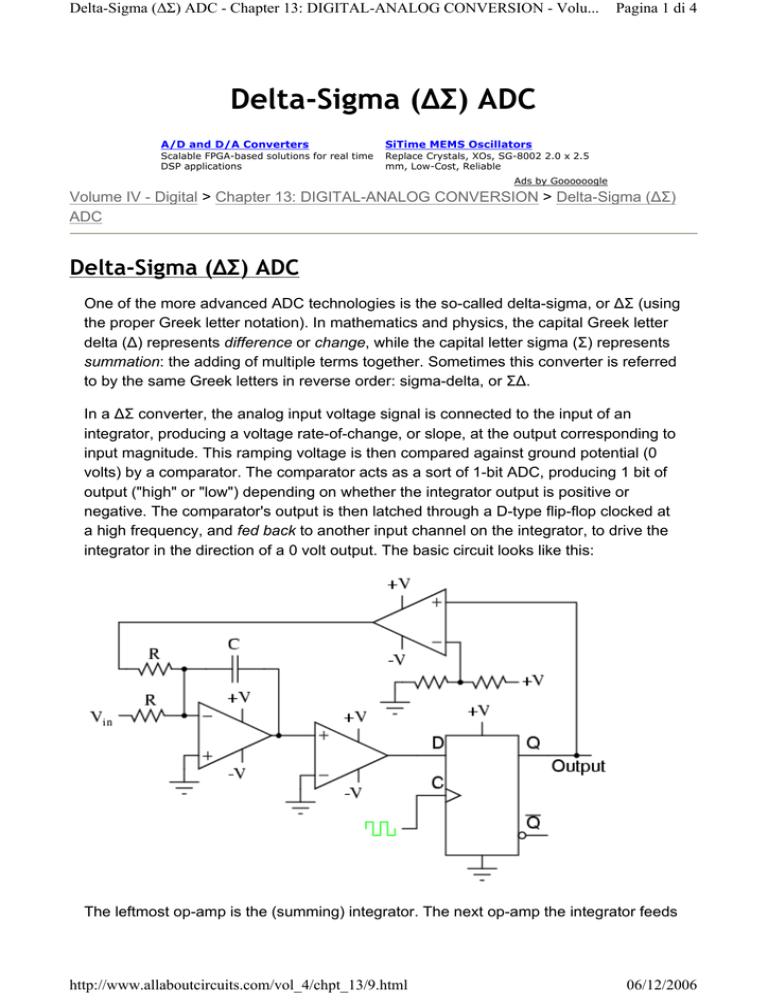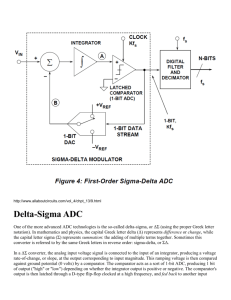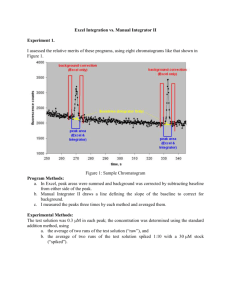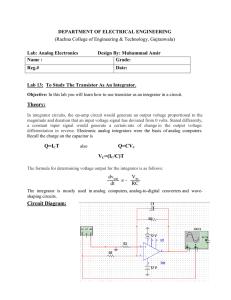
Delta-Sigma (ΔΣ) ADC - Chapter 13: DIGITAL-ANALOG CONVERSION - Volu...
Pagina 1 di 4
Delta-Sigma (ΔΣ) ADC
A/D and D/A Converters
SiTime MEMS Oscillators
Scalable FPGA-based solutions for real time
DSP applications
Replace Crystals, XOs, SG-8002 2.0 x 2.5
mm, Low-Cost, Reliable
Ads by Goooooogle
Volume IV - Digital > Chapter 13: DIGITAL-ANALOG CONVERSION > Delta-Sigma (ΔΣ)
ADC
Delta-Sigma (ΔΣ) ADC
One of the more advanced ADC technologies is the so-called delta-sigma, or ΔΣ (using
the proper Greek letter notation). In mathematics and physics, the capital Greek letter
delta (Δ) represents difference or change, while the capital letter sigma (Σ) represents
summation: the adding of multiple terms together. Sometimes this converter is referred
to by the same Greek letters in reverse order: sigma-delta, or ΣΔ.
In a ΔΣ converter, the analog input voltage signal is connected to the input of an
integrator, producing a voltage rate-of-change, or slope, at the output corresponding to
input magnitude. This ramping voltage is then compared against ground potential (0
volts) by a comparator. The comparator acts as a sort of 1-bit ADC, producing 1 bit of
output ("high" or "low") depending on whether the integrator output is positive or
negative. The comparator's output is then latched through a D-type flip-flop clocked at
a high frequency, and fed back to another input channel on the integrator, to drive the
integrator in the direction of a 0 volt output. The basic circuit looks like this:
The leftmost op-amp is the (summing) integrator. The next op-amp the integrator feeds
http://www.allaboutcircuits.com/vol_4/chpt_13/9.html
06/12/2006
Delta-Sigma (ΔΣ) ADC - Chapter 13: DIGITAL-ANALOG CONVERSION - Volu...
Pagina 2 di 4
into is the comparator, or 1-bit ADC. Next comes the D-type flip-flop, which latches the
comparator's output at every clock pulse, sending either a "high" or "low" signal to the
next comparator at the top of the circuit. This final comparator is necessary to convert
the single-polarity 0V / 5V logic level output voltage of the flip-flop into a +V / -V voltage
signal to be fed back to the integrator.
If the integrator output is positive, the first comparator will output a "high" signal to the
D input of the flip-flop. At the next clock pulse, this "high" signal will be output from the
Q line into the noninverting input of the last comparator. This last comparator, seeing
an input voltage greater than the threshold voltage of 1/2 +V, saturates in a positive
direction, sending a full +V signal to the other input of the integrator. This +V feedback
signal tends to drive the integrator output in a negative direction. If that output voltage
ever becomes negative, the feedback loop will send a corrective signal (-V) back
around to the top input of the integrator to drive it in a positive direction. This is the
delta-sigma concept in action: the first comparator senses a difference (Δ) between the
integrator output and zero volts. The integrator sums (Σ) the comparator's output with
the analog input signal.
Functionally, this results in a serial stream of bits output by the flip-flop. If the analog
input is zero volts, the integrator will have no tendency to ramp either positive or
negative, except in response to the feedback voltage. In this scenario, the flip-flop
output will continually oscillate between "high" and "low," as the feedback system
"hunts" back and forth, trying to maintain the integrator output at zero volts:
If, however, we apply a negative analog input voltage, the integrator will have a
tendency to ramp its output in a positive direction. Feedback can only add to the
integrator's ramping by a fixed voltage over a fixed time, and so the bit stream output
by the flip-flop will not be quite the same:
http://www.allaboutcircuits.com/vol_4/chpt_13/9.html
06/12/2006
Delta-Sigma (ΔΣ) ADC - Chapter 13: DIGITAL-ANALOG CONVERSION - Volu...
Pagina 3 di 4
By applying a larger (negative) analog input signal to the integrator, we force its output
to ramp more steeply in the positive direction. Thus, the feedback system has to output
more 1's than before to bring the integrator output back to zero volts:
As the analog input signal increases in magnitude, so does the occurrence of 1's in the
digital output of the flip-flop:
A parallel binary number output is obtained from this circuit by averaging the serial
http://www.allaboutcircuits.com/vol_4/chpt_13/9.html
06/12/2006
Delta-Sigma (ΔΣ) ADC - Chapter 13: DIGITAL-ANALOG CONVERSION - Volu...
Pagina 4 di 4
stream of bits together. For example, a counter circuit could be designed to collect the
total number of 1's output by the flip-flop in a given number of clock pulses. This count
would then be indicative of the analog input voltage.
Variations on this theme exist, employing multiple integrator stages and/or comparator
circuits outputting more than 1 bit, but one concept common to all ΔΣ converters is that
of oversampling. Oversampling is when multiple samples of an analog signal are taken
by an ADC (in this case, a 1-bit ADC), and those digitized samples are averaged. The
end result is an effective increase in the number of bits resolved from the signal. In
other words, an oversampled 1-bit ADC can do the same job as an 8-bit ADC with onetime sampling, albeit at a slower rate.
< Back
Forward >
All About Electric Circuits. © Copyright 2003, AllAboutCircuits.com, All Rights Reserved.
http://www.allaboutcircuits.com/vol_4/chpt_13/9.html
Disclaimer Contact
06/12/2006



